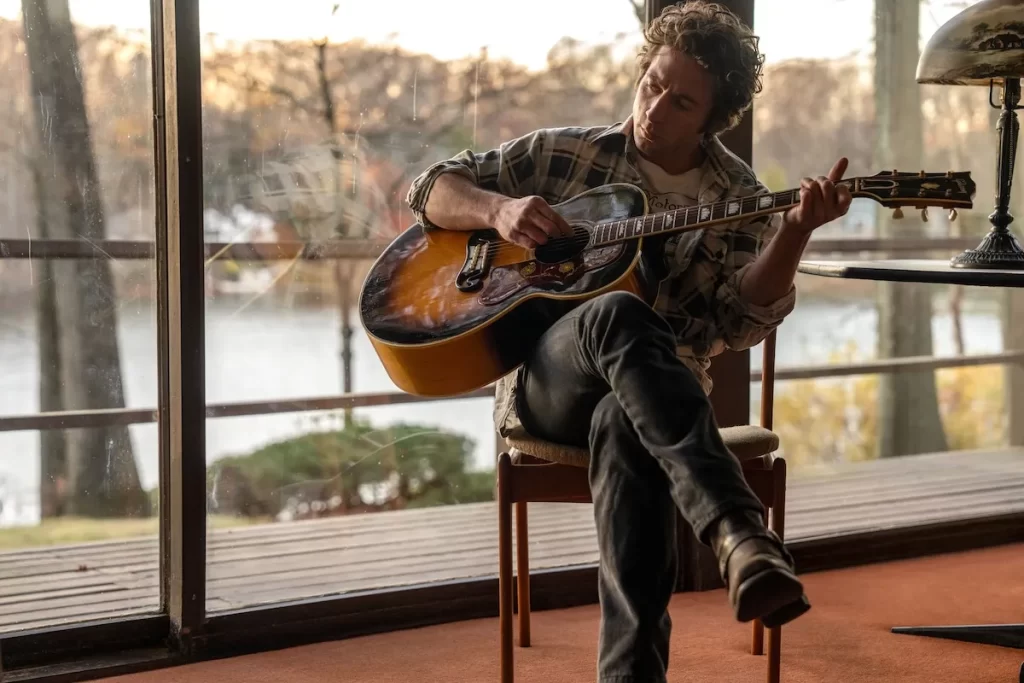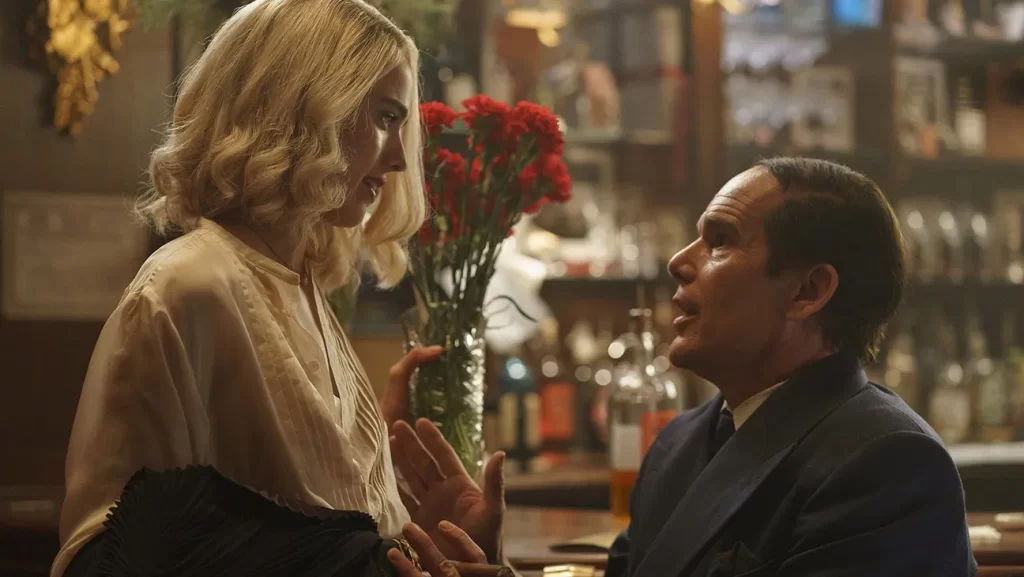*(Me. I Was the Guy We Asked.)
As someone who has covered Sundance every year in this century but who has been a member of The Church of Jesus Christ of Latter-day Saints for even longer, I was wary of The Mission, a documentary following four LDS missionaries from Utah to Finland and back again.
Having been a missionary myself (Philadelphia, 1993-1995), I could well imagine what embarrassments the film might contain. I once made a companion so angry he punched a telephone pole and broke his hand, in broad daylight, in his full missionary costume (white shirt, tie, black name tag). What if this had been witnessed not just by bored teens on a Pottstown street, but a documentary crew? Well, everyone would have seen that I was right, that’s what.
Most LDS missionaries are 18-20 years old — incredibly young, without much life experience (they often go right after high school), and frequently coming from small communities in Utah, Idaho, or Arizona (the Jell-O Belt) where most of their neighbors were LDS, too. Most missionaries are polite and well-behaved, but we all have our moments, especially when we are young and away from home and our companion is a belligerent tool who’s just mad because his previous companion got transferred for making out with a woman they were supposed to be teaching.
Furthermore, Sundance has shown LDS-themed docs before, both shorts and features (and one that was 39 minutes, which is neither), and they’re pretty much always about topics that make church members brace themselves and think, “Oh, boy, here we go.”
Basically: How weird is this going to make us look?
But The Mission is surprisingly generous. It shows the ins and outs of daily missionary life more intimately than anything ever seen outside of church-produced training videos, with no apparent agenda beyond giving a curious lay audience a peek behind the scenes. You could show this to an LDS crowd and convince them it was made by a faithful church member. In fact, if it weren’t for a single cuss word uttered by a disgruntled Finn, you could probably convince them that the movie was an official church production. (The titles even use the church’s old font!)
It wasn’t, but Helsinki-based director Tania Anderson (not LDS) did need the church’s cooperation to get the kind of access she got. She said in a Q&A that it took a year and a half to convince the church of her benign intentions. She must have had to make some concessions.
One that I can spot for sure is that when we see a baptismal service, the actual act — the dunking in the water — is not shown. The church considers this a sacred ordinance, not to be photographed.

It was customary in those days for missionaries newly arrived in Philadelphia to have their picture taken with the Rocky statue (which was outside the Spectrum then, before being moved to the steps of the art museum where it is in the movies). See, this is the kind of thing I’m talking about that might be embarrassing if anyone saw it.
Other omissions might be concessions, or might just reflect the reality of condensing hours of footage into 95 minutes. For example, there’s no mention (much less a glimpse) of the undergarments that LDS people wear, though these are a regular topic of conversation for missionaries (and roommates). The LDS Church has recently made a concerted effort to get away from the “Mormon” nickname — and sure enough, the term “Mormon church” is almost never heard in the film, despite still being common.
But honestly, I suspect the reason the movie doesn’t show missionaries arguing, doubting, breaking rules, slacking off, or punching telephone poles is simply that the missionaries being filmed had the good sense to wait until the cameras were gone for the day to have their fights and meltdowns.
As a missionary, you’re always “on” in public, even when not being trailed by a documentary crew. They drill that into your head in the Missionary Training Center (MTC): When you put on that name tag, you represent not just the church but the Lord. The average conscientious missionary wouldn’t dream of doing something publicly that would reflect negatively on the church, cameras or not.
What comes through the most in the four fresh-faced missionaries we follow — Elders Pauole and Davis, Sisters Field and Bills, all from Utah, all pretty Scandinavian-looking anyway — is their sincerity and optimism despite being thousands of miles from home, working with strangers, and speaking a foreign language. Even Elder Davis, who struggles with anxiety and depression and faces the prospect of having to end his mission early, maintains a positive attitude.
To a nonbeliever, this must resemble insanity. But it gets at what’s interesting about this (I assume) to an outsider. What makes people spend 18-24 months of their prime youth teaching religious lessons and doing service for people who, by and large, do not wish to hear religious lessons or receive service? Can it really be that they just … believe in it? And believe it can help others? Really??
Now, it is certain that some kids go on missions out of peer or parental pressure. I knew a guy who served because his dad promised to buy him a truck afterward. Many go not because they “want” to, exactly — even a true believer might understandably feel awkward proselytizing — but because they believe it’s the right thing to do and that God will reward them for making the effort.

My first area of assignment was Carneys Point, N.J. (hometown of Bruce Willis). The local branch of the LDS Church met in a YMCA in nearby Penns Grove in those days.
That’s the boat I was in. I had a “testimony,” as we say — I believed in the church’s teachings and had read the scriptures — but I’d have been lying if I’d said back then that I was eager to move to a new city and start asking strangers whether they believed in God. (If I did say that to you back then, I was lying. You should have known that.) Nonetheless, I went, and was soon glad I had gone, even when I faced the common challenges that the documentary covers: homesickness, loneliness, the occasional mismatched companionship (they have you swap partners every few months, which keeps murder rates low).
Any movie review is personal, of course, in that it reflects the critic’s own experience and opinions. But most movies don’t have scenes that instantly transport the critic back to Oct. 13, 1993, when his parents dropped him off at the MTC in Provo, Utah, to spend five weeks studying and practicing before heading to Philly. Despite all the time that has passed and the changes made in MTC logistics between then and now, when I saw those kids saying goodbye to their moms (it’s the moms who suffer most), I wept like it was me there again. I don’t know how much of that effect is due to powerful filmmaking and how much is just a Pavlovian response to seeing one’s experiences documented. Either way, it’s not often that a movie so completely dissolves me.
There were several other moments that had a similar (if not as powerful) effect on me. Despite my missionary service being so long ago, and in the U.S., and without the difficulty of learning a foreign language (except pronouncing water “wooder”), and despite how many small things about missionary work have changed since then, I was astonished by how accurately the film reflected my experience. Again, I don’t know if that alone makes it a “good” movie.
Some stray personal observations:
– It’s always a little embarrassing to see your faith practices out of context. LDS worship services aren’t that different from any other Christian denomination’s — some singing, some praying, some talking, you know the routine — and yet it’s jarring when it’s in a MOVIE, where ANYBODY might see it. You feel protective of it, even when, as here, it doesn’t seem like it’s being held up for ridicule.
– In Elder Pauole’s hometown of Nephi, Utah, we see a handmade “FOR SELL” sign, reflecting how the word “sale” is pronounced in those parts.
– When the missionaries speak in broken Finnish, Anderson subtitles what they actually say, not what they’re trying to say. This is amusing.
– The flip side of that is that when the missionaries speak in their own slang, Anderson translates it. Someone says he’s “trunky”; the subtitles say “ready to go home.”
– Public street contacting — where you just try to strike up conversations with strangers — is THE WORST. I never believed any missionary who said they enjoyed it, except in the masochistic way some people “enjoy” eating hot peppers or reading the comments. It’s so hard and awkward and scary. Now imagine doing that WITH CAMERAS FOLLOWING YOU. These kids are braver than us all.



